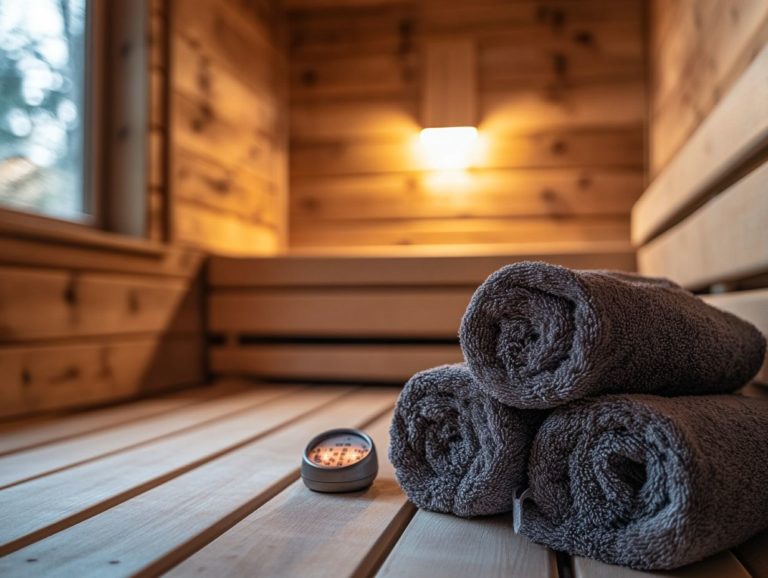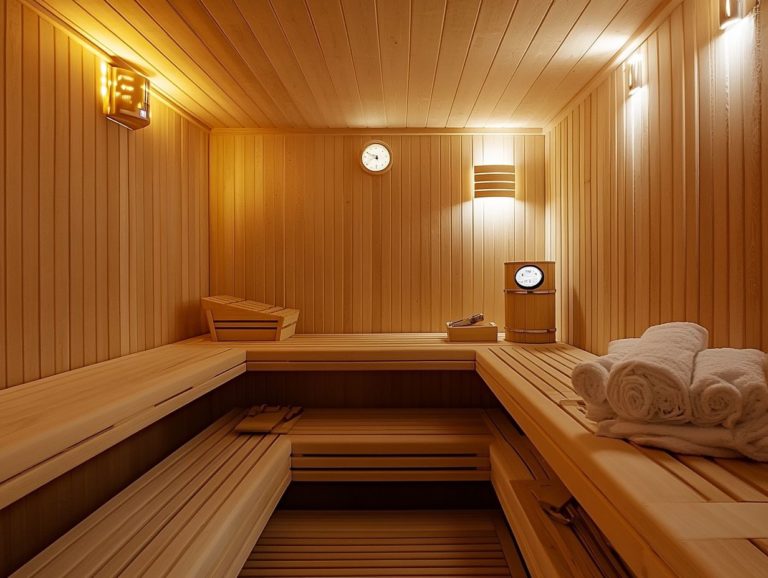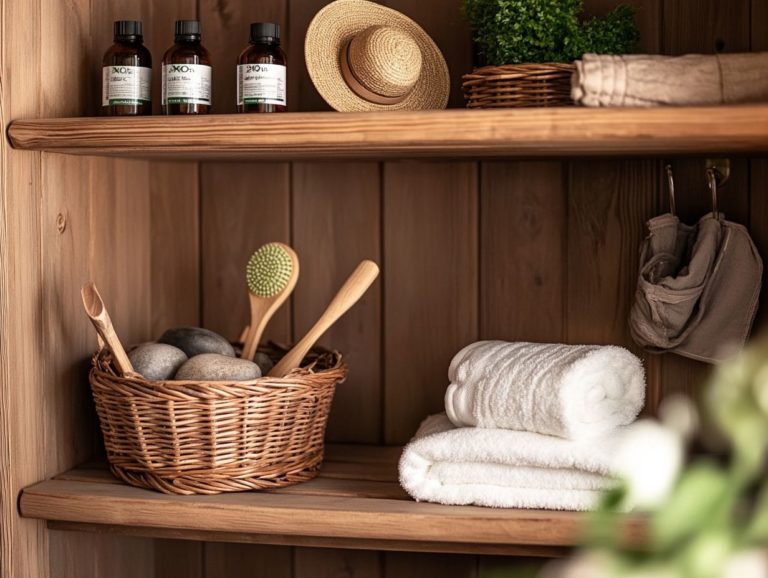Sauna Maintenance: Understanding Temperature Control
Sauna enthusiasts understand that the essence of a truly fulfilling experience lies in mastering temperature control.
This article delves into the different types of saunas available, including traditional and infrared options, along with their ideal temperature ranges. You’ll find guidance on how to monitor and adjust sauna temperatures using effective tools and techniques, ensuring you achieve maximum relaxation and health benefits.
It addresses common temperature issues and emphasizes the importance of regular maintenance to keep your sauna performing at its peak.
Embark on a journey to create your perfect sauna sanctuary!
Contents
- Key Takeaways:
- Types of Saunas and Temperature Ranges
- How to Monitor and Adjust Sauna Temperature
- Maintaining Optimal Temperature for Different Purposes
- Troubleshooting Common Temperature Issues
- Regular Maintenance for Sauna Temperature Control
- Frequently Asked Questions
- What is sauna temperature control and why is it important for maintenance?
- What is the ideal temperature range for a sauna and how can I achieve it?
- What are the common issues with sauna temperature control and how can I troubleshoot them?
- How often should I check and adjust the temperature in my sauna?
- Can I use a sauna thermometer to monitor the temperature in my sauna?
- Are there any safety precautions I should take when adjusting the temperature in my sauna?
Key Takeaways:
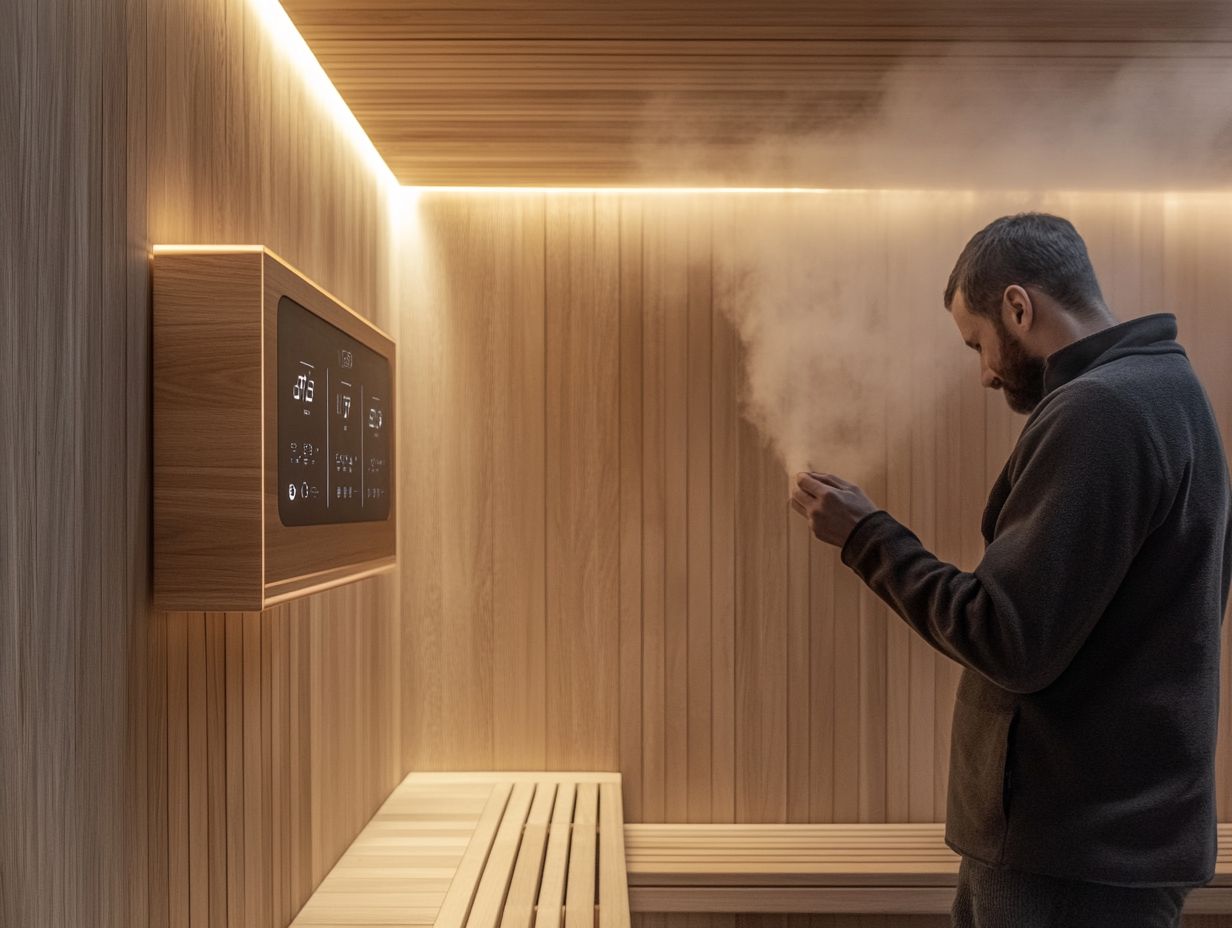
- Understanding the importance of proper temperature control is crucial for a safe and effective sauna experience.
- Different types of saunas have varying temperature ranges, and it’s important to find the right temperature for your individual needs and goals.
- Regular maintenance, monitoring, and adjustment of temperature are necessary for maximizing relaxation, health benefits, and overall enjoyment of your sauna.
The Importance of Temperature Control
Temperature control is essential for enjoying your sauna experience, whether you choose a traditional sauna or an infrared one. By maintaining the right temperature, you’ll unlock amazing health benefits of heat therapy, such as improved blood circulation and detoxification.
Knowing how your body responds to heat will enhance your sauna experience, allowing you to make adjustments as needed for both safety and enjoyment.
Each type of sauna presents unique humidity levels and heat distribution, so it s vital for you to grasp how these factors influence your overall experience. For example, a traditional Finnish sauna usually operates at higher temperatures with lower humidity, encouraging a deep, effective sweat to aid in detoxification. On the other hand, infrared saunas utilize devices that heat the body without heating the air around it, allowing for longer, more comfortable sessions while still promoting significant sweating.
This variation not only enhances your enjoyment of sauna culture but also impacts your body’s reactions, ensuring that you can enjoy maximum health benefits while maintaining a safe and pleasant environment.
Types of Saunas and Temperature Ranges
You have a wealth of sauna options at your fingertips, including dry sauna and wet sauna, each designed to meet distinct preferences and health objectives.
Traditional saunas tend to operate at elevated temperatures accompanied by low humidity, delivering an invigorating experience. In contrast, infrared saunas create a soothing atmosphere that gently penetrates the skin at more moderate temperatures, enhancing both relaxation and detoxification.
Whether you seek the intense heat of a traditional sauna or the gentle embrace of infrared warmth, there s an ideal choice waiting for you.
Comparing Traditional and Infrared Saunas
When you compare traditional saunas to infrared saunas, you ll uncover intriguing distinctions in their heating methods, temperature preferences, and overall wellness benefits. Traditional saunas typically rely on a wood-burning or electric heater to generate heat, creating a high-temperature environment that amplifies sweating. In contrast, infrared saunas utilize infrared panels that directly heat your body, offering a more comfortable experience at lower core temperatures.
This difference in heating techniques leads to varied health benefits. Traditional saunas encourage intense sweating, aiding in detoxification and improving circulation, potentially benefiting conditions like arthritis and muscle pain. Infrared saunas offer gentle warmth that is effective for relaxation and stress relief, all while maintaining less extreme temperatures.
As you explore these options, you may notice different reactions during your sessions. Some people find that they achieve deeper relaxation in the soothing embrace of infrared heat, while others thrive on the invigorating warmth of a traditional sauna. Ultimately, your individual preferences and specific health goals will play a crucial role in determining which type of sauna will be most beneficial for you.
Don t wait! Discover which sauna makes you feel your best today!
How to Monitor and Adjust Sauna Temperature
Monitoring and adjusting sauna temperature effectively is essential for a safe and enjoyable session. This allows you to achieve your desired comfort level while reaping maximum health benefits.
Utilizing temperature control tools and adhering to safety guidelines helps maintain optimal temperature settings. This prevents excessive heat exposure or discomfort, ensuring your sauna experience is both pleasant and beneficial. For a deeper understanding, check out the role of heat in sauna safety.
Tools and Techniques for Temperature Control
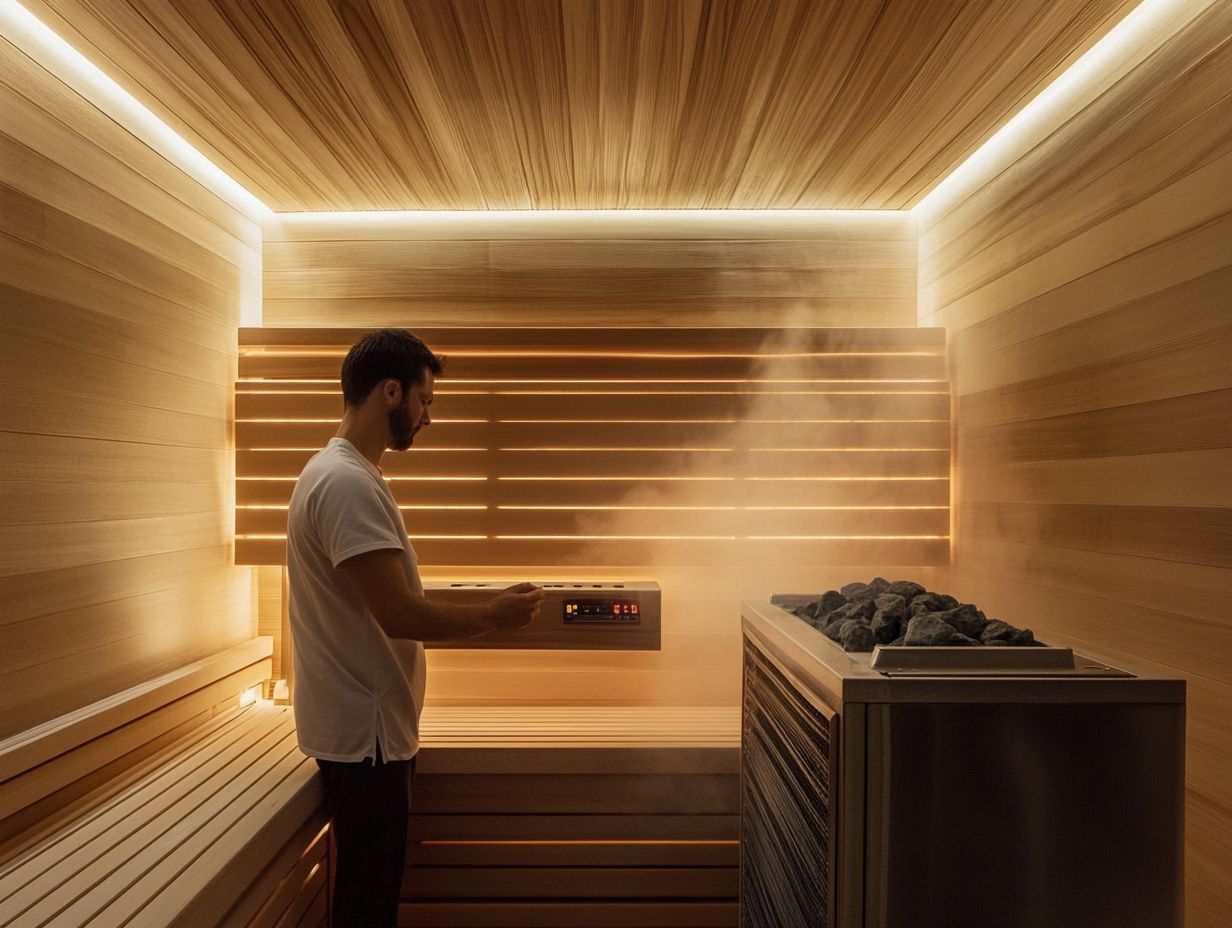
Using effective tools and techniques for temperature control in your sauna can elevate your experience. You can tailor the environment to suit your preferences and health goals.
For instance, digital thermometers enable you to easily track temperature changes. Techniques like Aufguss, which involves adding aromatic water to the sauna, can enhance humidity levels for deep relaxation.
These methods include using hygrometers, which provide valuable insights into humidity. This ensures the environment remains both comfortable and beneficial.
Incorporating essential oils like eucalyptus or lavender into your sauna routine amplifies the therapeutic effects, fostering relaxation and offering respiratory benefits.
Finding the right balance of temperature and humidity, complemented by aromatic enhancements, creates a holistic approach to well-being. It invites you into a serene space that nourishes both body and mind.
Experimenting with various oils and techniques allows you to craft a personalized sauna experience that aligns with your unique wellness journey.
Maintaining Optimal Temperature for Different Purposes
Maintaining optimal temperature settings in your sauna is crucial for unlocking various health benefits. Whether you’re seeking relaxation, detoxification, or weight loss, understanding the recommended temperatures can guide your sauna sessions.
Tailor each experience to align with your wellness journey and unique needs.
Recommended Temperatures for Relaxation and Health Benefits
If you re seeking relaxation and health benefits from your sauna experience, stick to the recommended temperatures specific to your sauna type. Traditional saunas thrive at higher heat levels, while infrared saunas offer therapeutic advantages at lower, more comfortable temperatures.
The ideal temperature for traditional saunas is typically between 150 F to 195 F, creating an invigorating atmosphere. Conversely, infrared saunas perform best around 120 F to 140 F, allowing you to bask in warmth without feeling overwhelmed.
This range caters to your comfort and elevates your overall wellness experience. It works by reducing stress and aiding in muscle recovery.
By understanding these temperature ranges, you can ensure that each session aligns perfectly with your preferences while maximizing the health benefits associated with each sauna type. Additionally, it’s important to consider winter sauna care to protect your investment.
Adjusting Temperature for Specific Purposes, such as Weight Loss or Detoxification
Adjusting the sauna temperature for specific purposes, like weight loss or detoxification, significantly enhances the effectiveness of your sessions. Fine-tuning the temperature settings can promote increased sweating and elevate your metabolic rate.
If weight loss is your goal, research shows that higher temperatures around 160 F to 190 F can enhance calorie burn. Meanwhile, moderate heat, between 140 F and 160 F, may be better suited for detoxification.
Start with shorter sessions of about 10 to 15 minutes, gradually increasing the duration as your body acclimatizes. Listening to your body is crucial, as reactions to heat can vary widely.
Stay well-hydrated and incorporate relaxation techniques to enrich your experience. This ensures both your mind and body enjoy the full rewards of this ancient practice.
Troubleshooting Common Temperature Issues
Troubleshooting common temperature issues in your sauna is crucial for maintaining a safe and enjoyable experience. Whether you’re dealing with excessive heat or an unexpected chill, ensuring your comfort is key.
By understanding the potential causes of these temperature fluctuations, you can implement effective maintenance practices that restore optimal conditions. For detailed insights, check out understanding sauna maintenance costs. This will elevate your overall sauna journey to a new level of comfort and relaxation.
Dealing with Temperature Fluctuations
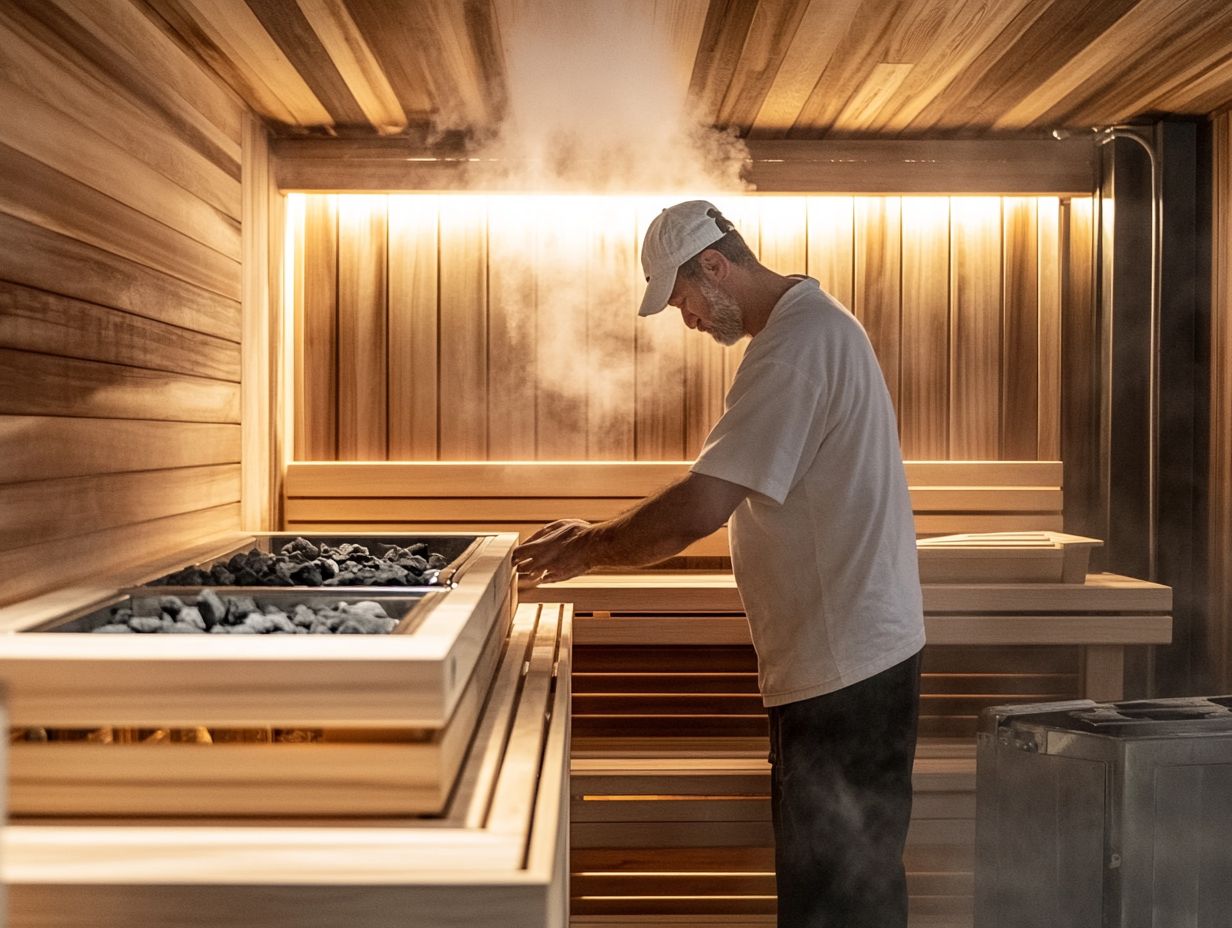
Dealing with temperature fluctuations in your sauna can be quite the headache. Grasping their causes and solutions enables you to maintain a comfortable environment.
Regular maintenance and adherence to safety guidelines are essential for minimizing these fluctuations. This ensures a consistently enjoyable sauna experience.
Several factors can lead to these ups and downs, including improper insulation, moisture buildup, or equipment malfunctions. Routinely inspect and seal any gaps in insulation to help your sauna keep its warmth.
Pay attention to moisture levels; excessive humidity can cool things down and encourage mold growth. Servicing your heating elements and control systems can prevent unexpected temperature drops.
By staying informed about these critical aspects and implementing proactive solutions, you can create a sanctuary that remains inviting and warm. This boosts both your comfort and wellness.
Addressing Excessive Heat or Cold
Addressing issues of excessive heat or cold in your sauna is crucial for maintaining your comfort and safety. Recognizing the signs of temperature extremes enables you to take necessary steps to adjust the environment.
It s essential to regularly check the temperature settings to ensure they cater to your preferences. Excessive heat can lead to dehydration or discomfort, turning what should be a relaxing experience into an ordeal.
Conversely, insufficient warmth can diminish the therapeutic benefits that a sauna has to offer. Keep a vigilant eye on temperature fluctuations with a reliable thermometer.
If it registers above normal levels, consider adjusting the heater settings or increasing ventilation. If the atmosphere feels chilly, adding warmth through extra heating elements or reducing airflow can create a cozy space.
Act quickly when you notice temperature extremes to ensure your safety. By taking these proactive measures, you can significantly enhance your comfort and overall safety during every sauna visit.
Regular Maintenance for Sauna Temperature Control
Regular maintenance keeps your sauna experience at its best! It is crucial for achieving optimal sauna temperature control and ensuring a consistently safe and enjoyable experience.
By routinely cleaning and inspecting your temperature control tools, you enhance their performance and adhere to safety guidelines that elevate your comfort during each sauna session.
Cleaning and Inspecting Temperature Control Tools
Cleaning and inspecting the temperature control tools in your sauna is essential for maintaining both safety and comfort. Ensuring these tools operate correctly allows you to achieve the perfect sauna temperature.
To kick off the cleaning process, start by disconnecting all power sources to the sauna. Safety should always be your top priority.
Next, delicately remove the temperature control panel and check for any dust or debris that may have settled over time. Grab a soft, damp cloth and gently wipe the surface, steering clear of harsh chemicals that could cause damage.
Once you’ve cleaned it up, inspect the wiring and connections for any signs of wear or corrosion, as these issues can significantly affect functionality. Regular maintenance not only extends the life of your sauna but also enhances its health benefits.
It promotes relaxation and improved circulation.
Frequently Asked Questions
What is sauna temperature control and why is it important for maintenance?
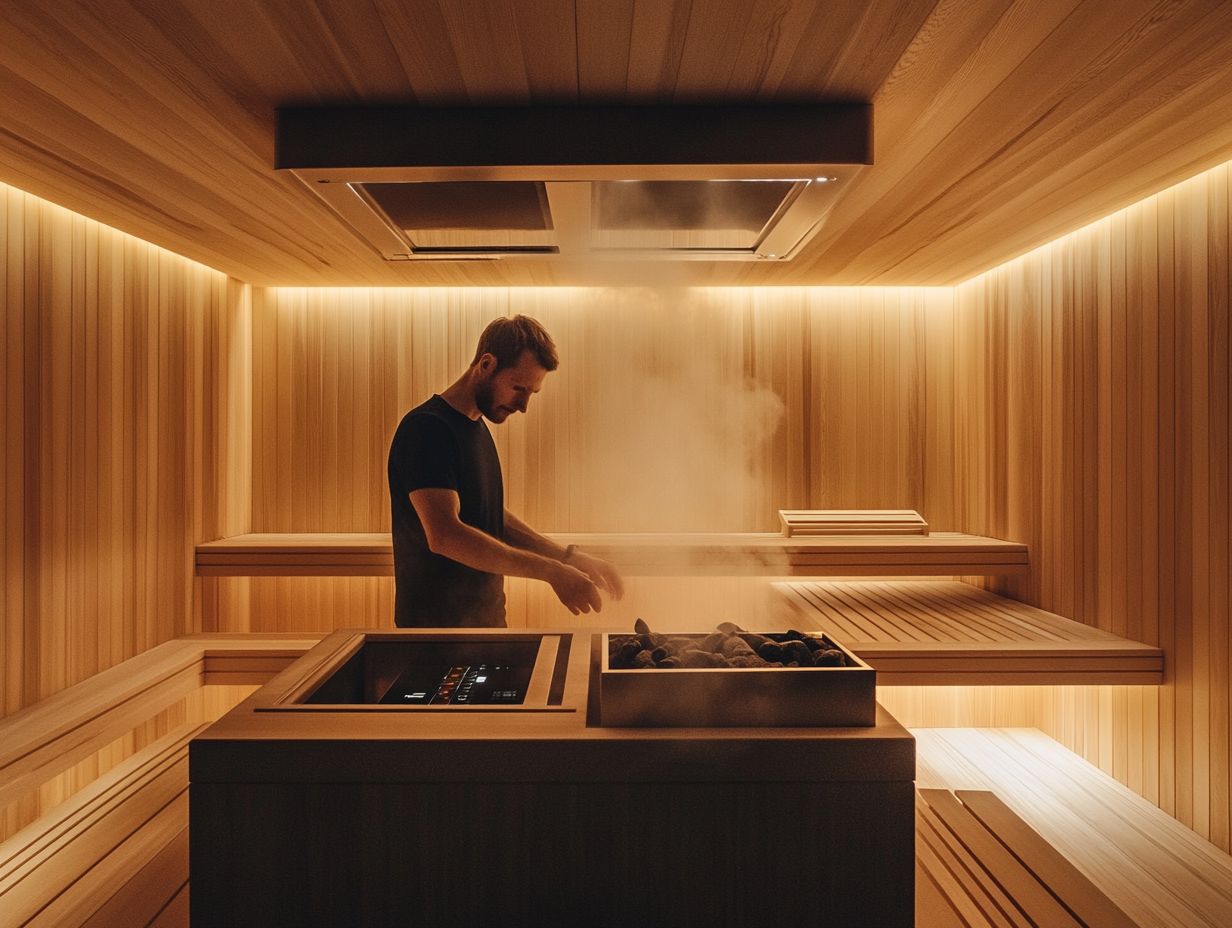
Sauna temperature control lets you manage the heat inside the sauna. It’s important for safety and the sauna’s lifespan.
What is the ideal temperature range for a sauna and how can I achieve it?
The ideal sauna temperature ranges from 150 F to 190 F. Use a sauna thermometer to monitor it and adjust the heater as needed. Start at a lower temperature for a comfortable experience!
What are the common issues with sauna temperature control and how can I troubleshoot them?
Common sauna temperature issues are high, low, or fluctuating temperatures. Check the thermostat, a device that controls the temperature, and ensure good ventilation.
How often should I check and adjust the temperature in my sauna?
Check the temperature every 15-20 minutes. This keeps it comfortable and prevents damage from excessive heat.
Can I use a sauna thermometer to monitor the temperature in my sauna?
Yes! A sauna thermometer gives you the most accurate readings. Choose one designed specifically for saunas.
Are there any safety precautions I should take when adjusting the temperature in my sauna?
Always turn off the sauna heater before adjusting the temperature. This prevents burns. Never leave the sauna unattended and follow the manufacturer’s guidelines.

